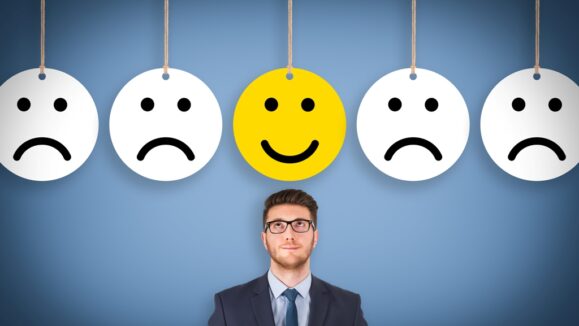A panel was assembled to discuss the future of collaboration in myopia research and treatment following the recent American Academy of Optometrists (AAO) 2020 Virtual Press Conference on Myopia Progression in Children. During the press conference, four speakers addressed the prevalence of myopia as a global health issue, cited ongoing studies and advances in myopia treatment, and emphasized the need for an international partnership.
Collaboration is Key
Dr. Richard Abbott, past president of the AAO, gave an overview of myopia’s prevalence and approaches to treatment; he emphasized expert collaboration is necessary for successful treatment. Dr. Abbott believes the combination of global resources and increased global awareness are key to combating the disease.
According to the International Association for the Prevention of Blindness (IAPB), Dr. Abbott said: “It is predicted that in 2050, nearly 50 percent of the [global] population will be affected by myopia.” He noted that this is a significant increase from the 28 percent of global myopia cases reported by the IAPB in 2010. Dr. Abbott also stated that cases of high myopia will grow from 300 million in 2020 to about 900 million in 2050.
Dr. Abbott noted: “There are vision-threatening eye conditions that are clearly linked or associated with high myopia, such as retinal detachment, glaucoma, a cataract that require surgery, and macular scarring — so these conditions will also increase.”
A task force was appointed by the AAO to battle these statistical trends. The task force is co-chaired by Drs. Abbott and Donald Tan. They then chose 20 experts from around the world to contribute. Their goals are to reduce the age of myopia onset and to slow the progression of myopia, globally.
Myopia and Youth Self Esteem
Dr. Mary Frances Cotch, the director of the National Eye Institute (NEI) Office of Vision Health, focused her talk on the effects of myopia in youth populations. She linked the development of myopia to a number of academic and social concerns.
Dr. Cotch said that myopia does influence children in many ways and can affect their sense of well-being overall. “For some, it may manifest because they have difficulty paying attention in school and this could impact negatively on their grades —which influences their choices for their career trajectories,” she shared.
“Other children may excel at sports and dream of a career in sports or an academic college scholarship [and] the impact of myopia on their self esteem can really be profound,” said Dr. Cotch.
Another environmental factor is socioeconomic status. Dr. Cotch said: “Myopia becomes a burden on [the child] because some of them know that their family can not afford to buy eyeglasses. These are issues of equity that need to be addressed.”
Once myopia is identified in young learners, there are significant social determinants. Dr. Cotch makes it clear that in the efforts toward global awareness of myopia as a public health concern, environmental and lifestyle factors are important.
Strategies for Myopia Control
Dr. Susan Cotter, the incoming president of the AAO, discussed a variety of optical strategies that have been shown to slow myopia progression. These include different types of contact lenses and spectacles that are then analyzed on their ability to resist the progression of myopia and the changes to the axial length of the eye.
There are two different kinds of spectacle lenses: customized single vision lenses and bifocals. Bifocals come in two types, executive bifocals and progressive addition lenses (PALs). In the study Dr. Cotter discussed, PALs showed greater slowing of myopia progression versus single vision lenses (SVLs). However, the differences were minimal — one quarter of a unit — and therefore not clinically significant. The study on two different types of bifocals showed more promise.
The bifocal clinical trial discussed by Dr. Cotter included two executive bifocals, one with a base-in prism and one without, using SVL as a control. Compared to SVL, both bifocals performed better. The bifocals with the base-in prism, Dr. Cotter remarked, slowed myopia progression by a diopter, compared to the SVL and bifocal lenses.
Dr. Cotter also described customized lenses that are now being released, with a focus on Defocus Incorporated Multiple Segments (DIMs). DIMs have a clear optical zone with a blurring in the periphery. These lenses were compared with SVLs and showed a benefit in reducing progression of myopia by approximately half a diopter and a slowing of axial lengthening.
Contact lenses have also been shown to reduce the progression of myopia. Dr. Cotter discussed orthokeratology, the process of corneal reshaping. During this process the subject sleeps in lenses that are fitted to be flatter than their cornea, thus pressing the cornea downward and reshaping the eye. This process has shown positive results.
MiSight (CooperVision; California, USA), an FDA-approved soft multifocal lens, has also shown benefits. These lenses have a central distance zone with plus power in the periphery. Dr. Cotter said: “Chamberlain et.al, in Optometry and Vision Science, reported randomized trial results where they compared these lenses to SVLs and found about two-thirds of a unit difference.”
Dr. Cotter discussed a large multifocal contact lens study known as BLINK. This recently published study compared SVL contact lenses with medium add power and high add power lenses, worn by children. The high add power contact lenses showed the most promise in the reduction of myopic progression.
The reduction of myopic progression and axial length can be treated by both contact lenses and spectacle lenses, according to Dr. Cotter. There is also potential for a combination of treatments that maximize the potential positive outcomes in myopia treatment.
Combination Myopia Treatments
Dr. Michael Repka, AAO medical director for government affairs, said: “There is almost certainly going to be a combination of treatments that are going to be useful in this condition.” Low-dose atropine eye drops in combination with other therapies have been shown to reduce the progression of myopia. This drug, Dr. Repka said, though not FDA-regulated, is safe and commonly used in Eastern populations.
Dr. Repka also suggests that myopia can be treated environmentally, as well as clinically. He said: “More outdoor time equals less myopia in studies that have been completed in Eastern Asia. This may be due to a number of different factors.” He mentioned a study conducted in Taiwan that found a reduction of the onset of myopia by 9.1% by making the students stay outside for an extra 40 minutes a day.
Though there are variables, he suggested that more outdoor time is better for general health, as well as being clinically significant in reducing the progression of myopia.
Editor’s Note: The AAO 2020 Virtual Press Conference on Myopia Progression in Children was held on November 16, 2020. Reporting for this story also took place during the press conference.



